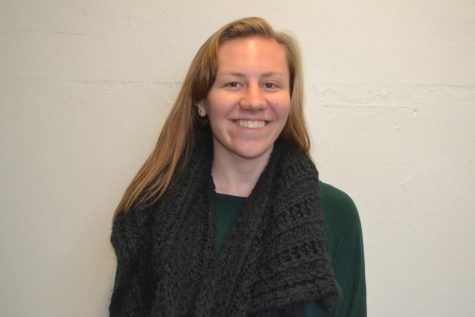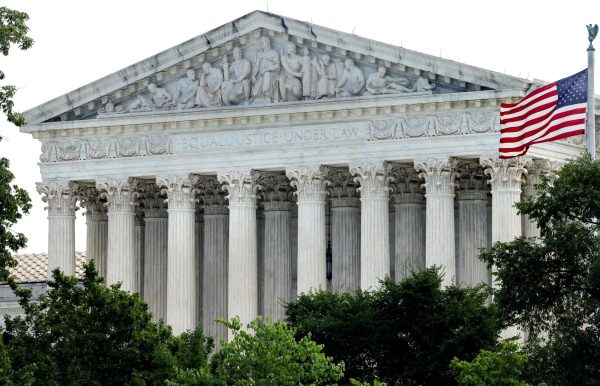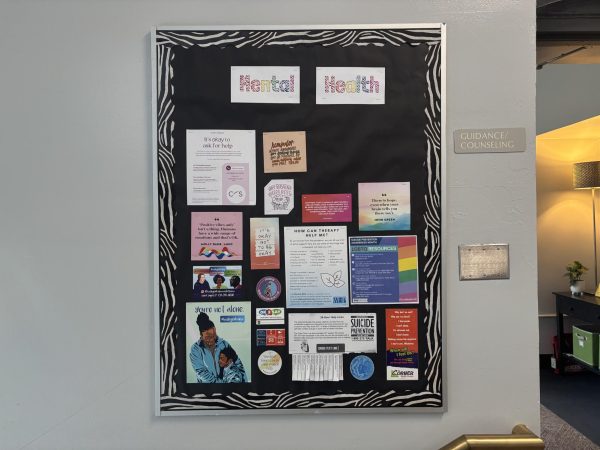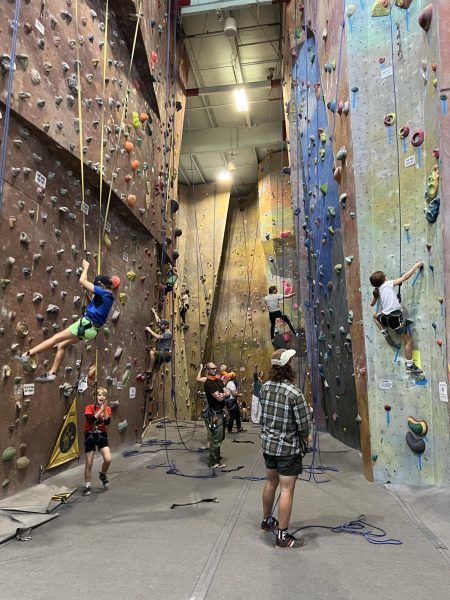The Aftermath of the Earthquake
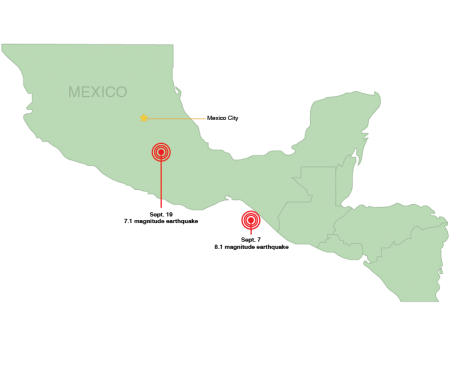
PUEBLA CITY, Mexico – Students, fighting to regain their balance, scrambled out of their school. Others screamed as teachers helped to push students down a cramped staircase, which grew more and more crowded while some paused, unable to walk down them. One student jumped from an outdoor walkway that lined the second level of the school. Water splashed out of the sides of a fountain onto the surrounding pavement in front of the school; cars rattled and trees trembled. Staff members guided students to a football field where they cried and embraced each other. A voice over a megaphone told the students to “Settle down.”
At 1:14 PM (CT) on Tue., Sept. 19, a 7.1 magnitude earthquake shook Mexico. The epicenter of the earthquake was 23 miles outside of Raboso, located in the state of Puebla. When the earthquake struck, many citizens were already taking part in earthquake drills, as it was the anniversary of an 8.0 magnitude earthquake that hit the state of Michoacan 32 years earlier. The recent earthquake followed an 8.1 magnitude earthquake struck off of the southwest coast of Mexico near the state of Oaxaca just a week and a half before. The earthquake affected major cities: Mexico City and Puebla City.
Fiona O’Rielly, a Community High School student on an exchange in Puebla, Mexico, was one of the students who raced out of school on Tuesday afternoon. This had already been the second earthquake that she had experienced since she began her exchange trip in August.
“I remember that I was drifting to sleep and all of a sudden, my bed started shaking and my host parents called for us and we all ran outside,” O’Rielly said. “But this one was just so much more serious and I didn’t really know what to think and it was probably less than a minute, but it felt like forever.”
When the second earthquake hit, her host mother was on the way to pick her up from school. She was stuck in terrible traffic and witnessed cars crashing into each other when the ground began to shake.
“I just can’t imagine being in a car because it was already hard to walk,” O’Rielly said.
On the drive home from school, her host mother noticed three girls standing on the side of the street trying to wave down a taxi. There wasn’t a single taxi in sight, so they let them into their car. Once the girls were inside the car, there were seven women stuffed into a five-passenger Honda.
“I’ll just always remember that because it was so nice of my mom to let them in,” O’Rielly said. “It was also nice to be with so many people after we heard about the earthquake; we all told our different stories and how it affected us differently because we were all in different places… I just think it’s crazy how one major experience can impact people in such different ways because we’ve all experienced it in different places.”
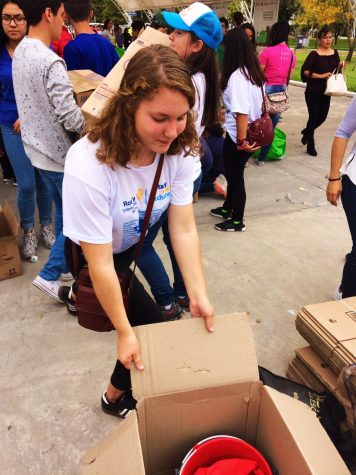
Fiona O’Rielly helps to gather and organize donations. which were then sent out to victims of the earthquake.
Now, O’Rielly is doing what she can to help those who were hit the worst by the earthquake. She was able to spend her time that she didn’t have classes – due to safety checks that the building had to undergo before the students could return to school – volunteering. She helped to gather clothes, food, and medicine for a drive near her house. Another day, she went to a Jaguar factory, where she organized more donations, which were then sent out to those in need. She was looking forward to driving to a nearby town, Morelos, where she would hand out donations collected at her church, but she missed the bus. All of the donations were brought to people who lost their homes during the earthquake.
“It was terrible what happened, but I didn’t think that so many people would be willing to help,” O’Rielly said.
O’Rielly said that she is reminded by her host family about how terrible the earthquake was. She heard about a school closer to the central part of Puebla City that collapsed and how children had to be helped out. She heard about people close to her host family who lost a family member.
Her host family formerly lived in Chiapas, a nearby town that O’Rielly had traveled to before and after the earthquake.
“There’s this beautiful, yellow church [in Chiapas] and it’s very old and actually two weekends ago I got to see it… then we went back and got to see it,” O’Rielly said. “We were eating at a restaurant near there, and it lost the arch at the top; it’s just totally gone.”
The injured church that she saw in San Cristóbal de las Casas is just one of the the many ways that she can still see the effects of the earthquake.
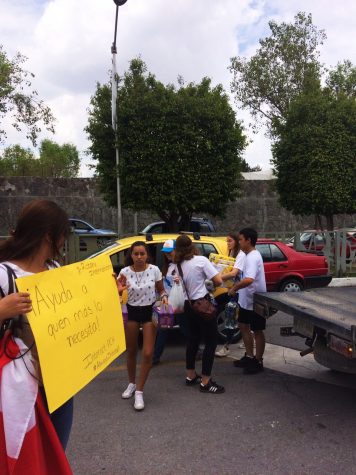
Fiona O’Rielly helps to gather and organize donations. which were then sent out to victims of the earthquake.
